An armed uncrewed surface vessel launched from Houthi-controlled Yemen got within a “couple of miles” of US Navy and commercial vessels in the Red Sea before detonating on Thursday, just hours after the White House and a host of partner nations issued a final warning to the militia group to cease the attacks or face potential military action.
Vice Admiral Brad Cooper, the head of US Navy operations in the Middle East, said it was the first time that the Houthis had used an uncrewed surface vessel (USV) since it began harassing commercial ships in the Red Sea after the outbreak of the Israel-Hamas war.
However, they have used them previously.
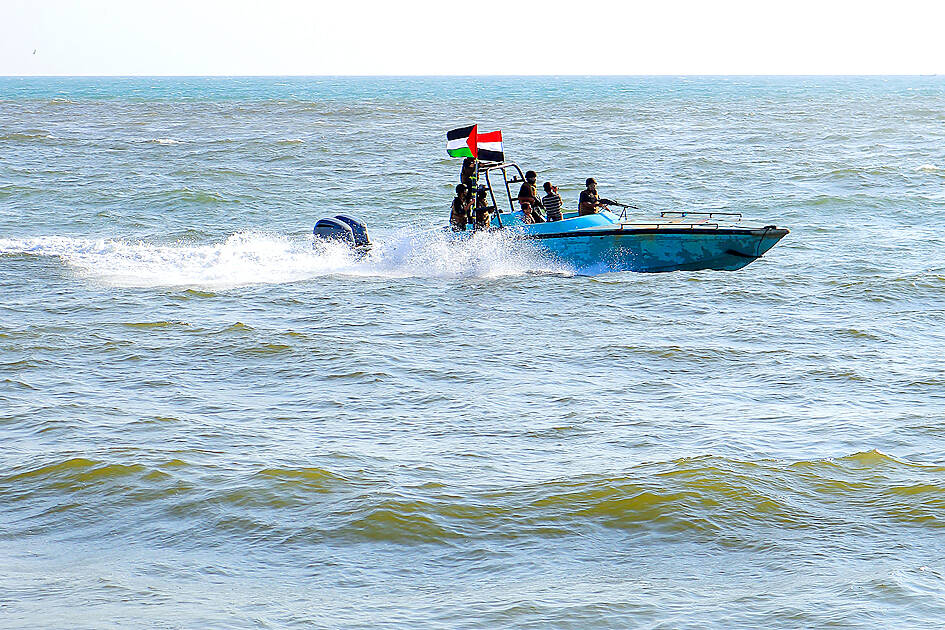
Photo: AFP
Fabian Hinz, a missile expert and research fellow at the International Institute for Strategic Studies, said the USV’s are a key part of the Houthi maritime arsenal and were used during previous battles against Saudi Arabian coalition forces that intervened in Yemen’s war.
They have regularly been used as suicide drone boats that explode upon impact.
Most of the Houthis’ USVs are likely assembled in Yemen, but often fitted with components made in Iran, such as computerized guidance systems, Hinz said.
US Deputy Ambassador to the UN Christopher Lu said at a emergency UN Security Council meeting on Wednesday that Iran has supplied the Houthis with money and advanced weapons systems, including drones, land attack cruise missiles and ballistic missiles.
He said Iran also has been deeply involved in planning the Houthis’ attacks on commercial vessels in the Red Sea.
He said the US is not seeking a confrontation with Iran, but Tehran has a choice.
“It can continue its current course or it can withhold its support without which the Houthis would struggle to effectively track and strike commercial vessels navigating shipping lanes through the Red Sea and Gulf of Aden,” Lu said.
This raises questions as to whether any action against the Houthis would also address Iran’s role in any way, which could risk widening the conflict.
A statement signed on Wednesday by the US, Australia, Bahrain, Belgium, Canada, Denmark, Germany, Italy, Japan, Netherlands, New Zealand, Singapore and the UK gave the Houthis what a senior official in the administration of US President Joe Bienn described as a “final warning.”
“Let our message now be clear: We call for the immediate end of these illegal attacks and release of unlawfully detained vessels and crews,” the countries said in the statement. “The Houthis will bear the responsibility of the consequences should they continue to threaten lives, the global economy, and free flow of commerce in the region’s critical waterways.”
Pentagon spokesman Major General Pat Ryder would not say whether any military action would follow Thursday’s launch of the sea drone.
“I’ll let the statement speak for itself, which, again, represented many nations around the world and highlighted that if these strikes don’t stop, there will be consequences,” Ryder said.
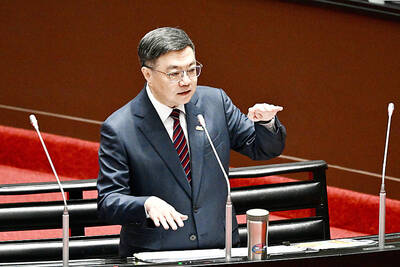
NATIONAL SECURITY: The Chinese influencer shared multiple videos on social media in which she claimed Taiwan is a part of China and supported its annexation Freedom of speech does not allow comments by Chinese residents in Taiwan that compromise national security or social stability, the nation’s top officials said yesterday, after the National Immigration Agency (NIA) revoked the residency permit of a Chinese influencer who published videos advocating China annexing Taiwan by force. Taiwan welcomes all foreigners to settle here and make families so long as they “love the land and people of Taiwan,” Premier Cho Jung-tai (卓榮泰) told lawmakers during a plenary session at the Legislative Yuan in Taipei. The public power of the government must be asserted when necessary and the Ministry of
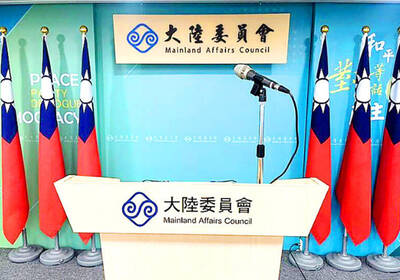
CROSSED A LINE: While entertainers working in China have made pro-China statements before, this time it seriously affected the nation’s security and interests, a source said The Mainland Affairs Council (MAC) late on Saturday night condemned the comments of Taiwanese entertainers who reposted Chinese statements denigrating Taiwan’s sovereignty. The nation’s cross-strait affairs authority issued the statement after several Taiwanese entertainers, including Patty Hou (侯佩岑), Ouyang Nana (歐陽娜娜) and Michelle Chen (陳妍希), on Friday and Saturday shared on their respective Sina Weibo (微博) accounts a post by state broadcaster China Central Television. The post showed an image of a map of Taiwan along with the five stars of the Chinese flag, and the message: “Taiwan is never a country. It never was and never will be.” The post followed remarks
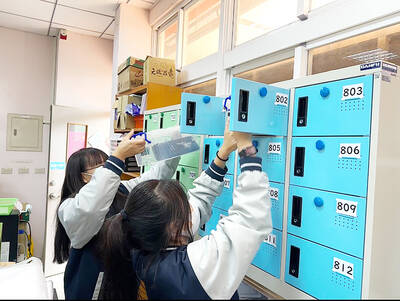
Proposed amendments would forbid the use of all personal electronic devices during school hours in high schools and below, starting from the next school year in August, the Ministry of Education said on Monday. The Regulations on the Use of Mobile Devices at Educational Facilities up to High Schools (高級中等以下學校校園行動載具使用原則) state that mobile devices — defined as mobile phones, laptops, tablets, smartwatches or other wearables — should be turned off at school. The changes would stipulate that use of such devices during class is forbidden, and the devices should be handed to a teacher or the school for safekeeping. The amendments also say
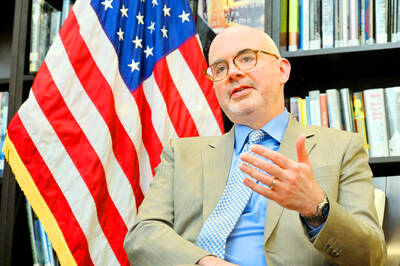
CONSISTENT COMMITMENT: The American Institute in Taiwan director said that the US would expand investment and trade relationships to make both nations more prosperous The US would not abandon its commitment to Taiwan, and would make Taiwan safer, stronger and more prosperous, American Institute in Taiwan Director Raymond Greene said. “The US’ commitment to Taiwan has been consistent over many administrations and over many years, and we will not abandon our commitment to Taiwan, including our opposition to any attempt to use force or coercion to change Taiwan’s status,” he said in an exclusive interview with the Liberty Times (the sister newspaper of the Taipei Times) on Friday last week, which was published in the Chinese-language newspaper yesterday. The US would double down on its efforts